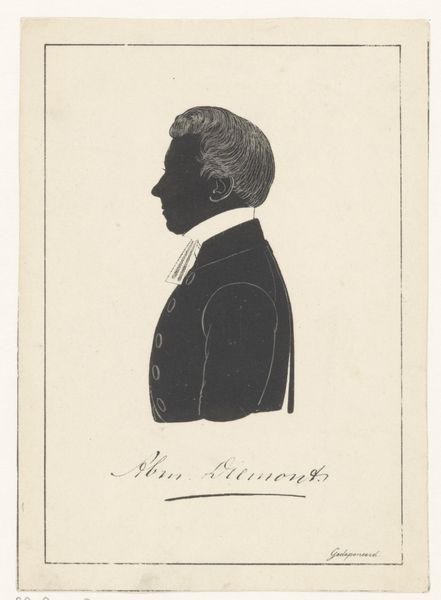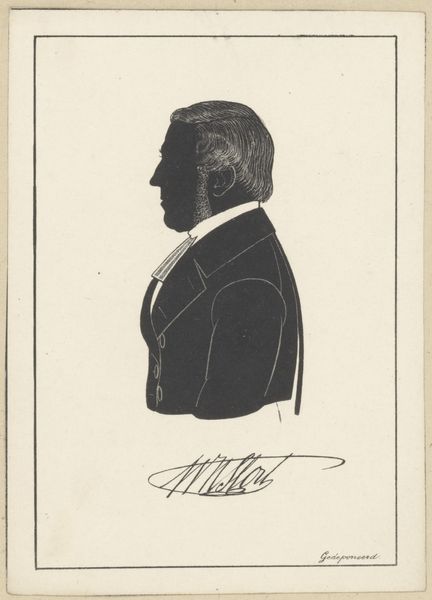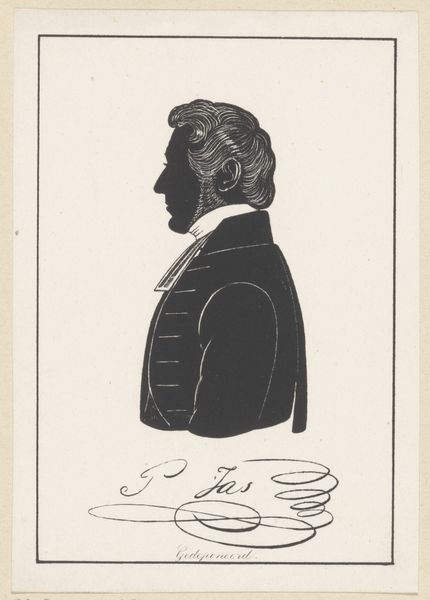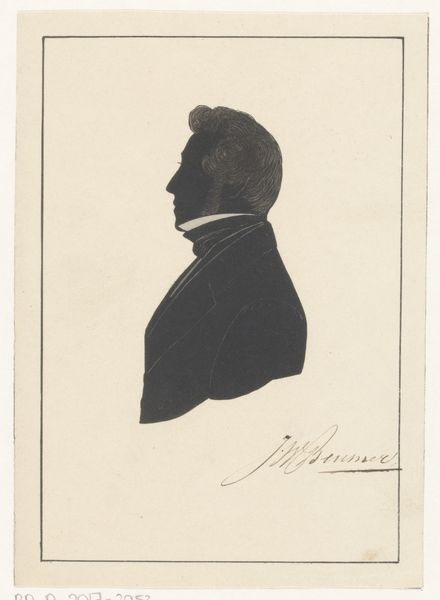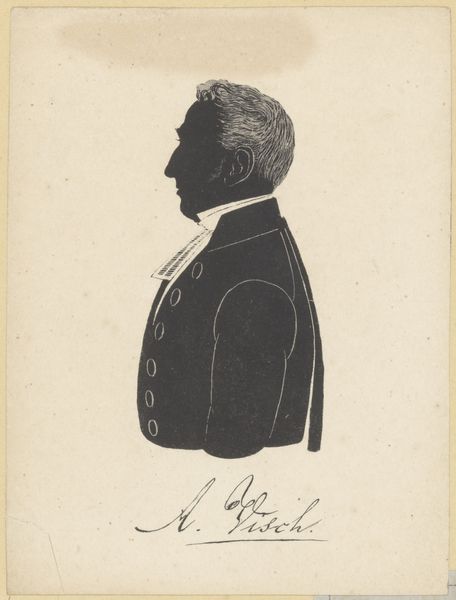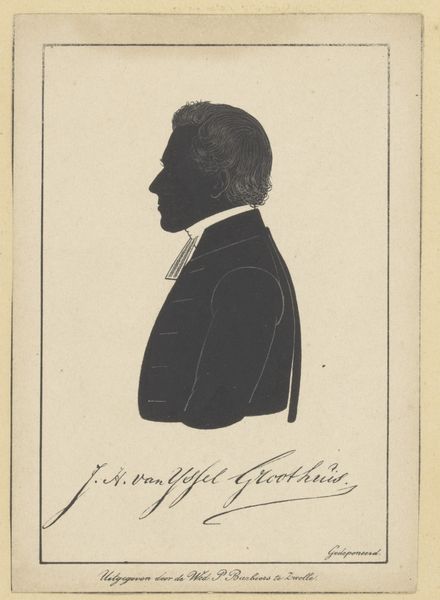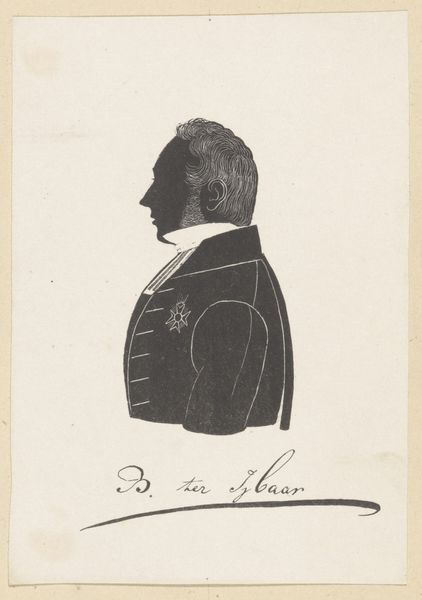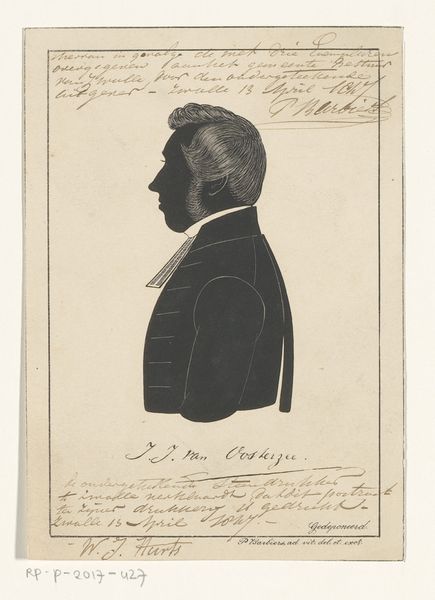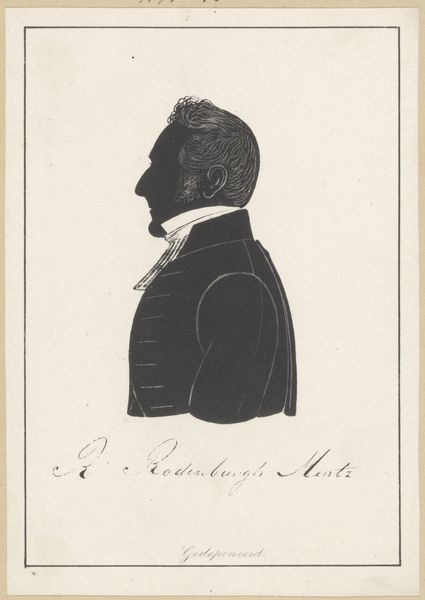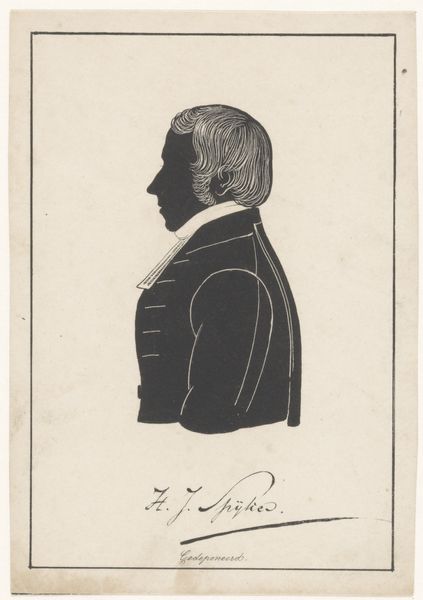
drawing, print
#
portrait
#
drawing
# print
#
form
#
line
Dimensions: height 151 mm, width 104 mm
Copyright: Rijks Museum: Open Domain
Pieter Barbiers IV made this silhouette portrait of Johannes Jacobus van Oosterzee sometime in the first half of the 19th century. Silhouette portraits were popular in the Netherlands and across Europe as an affordable alternative to painted portraits. This particular example gives us a glimpse into the social and intellectual circles of the time. Van Oosterzee was a prominent theologian and professor, deeply involved in the religious and intellectual debates of the period. Silhouettes, like this one, circulated among the middle classes, creating a shared visual culture. The institutions of art, such as portraiture, provided a means of visualizing and solidifying social standing. Historians look to sources like letters, publications, and institutional records to understand the individuals and the contexts represented in art. This enriches our understanding of how art and culture reflected, and actively shaped, the society of the time. Ultimately, art's meaning is deeply rooted in its social and institutional context.
Comments
No comments
Be the first to comment and join the conversation on the ultimate creative platform.

